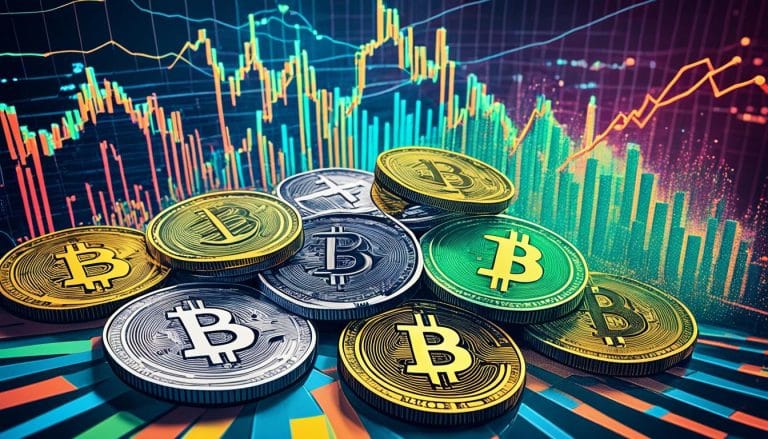Xrp’s Role In Cross-Border Trade
Cross-border payments are an integral part of the globalized economy. XRP, a digital asset developed by Ripple Labs, has become increasingly popular as a means of facilitating cross-border payments. This article will discuss the advantages and potential of using XRP for cross-border trade, including its implications for the global economy and other cryptocurrencies. It will also explore the regulatory environment surrounding XRP and its impact on remittances. Finally, it will consider the future potential of XRP in this field.
Overview of XRP
XRP is a digital asset designed to enable fast, efficient and cost-effective cross-border payments for financial institutions and corporates. It is one of the most popular alternative payments systems in the world of digital currencies, with a market capitalization exceeding $30 billion. XRP provides benefits such as improved speed, scalability, low transaction costs and interoperability with different payment networks. This allows it to process large volumes of transactions quickly and at lower costs than traditional methods. As such, XRP has become an attractive choice for banks looking to facilitate international transfers more efficiently. The potential for XRP to be used in cross-border trade makes it a promising technology with great potential for growth.
The advantages that XRP offers have been widely recognized by many organizations looking to take advantage of its features when making international payments. This includes reducing foreign exchange rate risks, improving liquidity through faster processing times and providing greater transparency into global money movement activities across borders. Furthermore, due to its decentralized nature, XRP can be used without relying on any central authorities or intermediaries which further simplifies the process of sending money overseas without costly delays or unnecessary paperwork. All these factors make XRP an ideal solution for facilitating cross-border trade in today’s world economy. Moving forward, it will likely remain at the forefront of innovation within this sector as more businesses continue to explore its capabilities in order to provide faster and more cost-efficient solutions for their customers’ needs.
Advantages of XRP for Cross-Border Trade
Ripple’s digital asset XRP has demonstrated advantages in intercontinental commerce due to its faster and more cost-effective payment system compared to traditional methods. Transactions are typically settled within seconds rather than days, making it much easier for businesses and consumers alike to send money across borders quickly and with minimal costs. The lower fee structure associated with XRP also provides an incentive for companies wanting to transfer funds internationally since they can save on international fees when compared with other forms of payment. This combination of faster payments and lower costs makes XRP an attractive option for those involved in cross-border trade. As the technology continues to evolve, the potential of XRP as a tool for cross-border payments is becoming increasingly apparent.
Potential of XRP for Cross-Border Payments
The digital asset of Ripple has the potential to revolutionize intercontinental commerce by providing a faster and more cost-efficient payment system. XRP can facilitate transactions across borders in a matter of seconds, drastically cutting down on the time required for payments to be processed. The scalability issues that come with cross-border payments are also addressed by using XRP, as it is able to process multiple transactions at once with ease. This allows for quicker processing times and lower costs, making it an attractive option for businesses looking to streamline their international operations. However, there are still some challenges associated with using XRP for cross-border payments that should be taken into consideration before adoption.
Challenges of using XRP for Cross-Border Payments
Using digital asset XRP for international payments presents certain challenges that must be addressed before adoption. These challenges include trustworthiness, scalability issues, regulatory environment, market liquidity and cost efficiency.
Trustworthiness is a major concern as the technology is still relatively new and untested in the real world; it needs to be secure enough to guarantee successful transactions between parties across different jurisdictions. Scalability issues are also a challenge; XRP needs to be able to handle high volumes of transactions quickly and securely without compromising its integrity. The regulatory environment surrounding XRP remains unclear in many countries, making it difficult for financial institutions to ensure they are compliant with local laws and regulations when using this technology for cross-border payments. Market liquidity is another issue as there may not be enough buyers or sellers of XRP in some markets which can lead to significant volatility in prices. Finally, cost efficiency is crucial since transaction fees need to remain low if institutions are going to use XRP instead of more traditional payment methods. As such, these challenges must be addressed before widespread adoption can occur.
To address these hurdles, further innovation and development of the technology will need to take place alongside an improved regulatory landscape that better facilitates the use of digital assets for global payments.
Regulatory Environment
The regulatory environment is an important factor to consider when discussing XRP and its role in cross-border payments. Government regulations can determine the acceptability of a payment system, while tax implications may influence the usage of XRP for payments. It is important to understand these considerations when assessing the use of XRP as a possible solution for cross-border payments.
Government regulations
Regulatory frameworks surrounding the usage of XRP for cross-border trading present an uncertain landscape that has been a cause of much speculation and unease. The alternative uses of XRP, such as its ability to facilitate faster payments across international borders, have created new opportunities in the global economy, but this also raises privacy concerns. To address these issues, governments around the world have implemented a variety of regulations:
- Financial Regulations – Governments have sought to protect consumers and enforce anti-money laundering (AML) laws by imposing regulations on financial institutions that use XRP for cross-border transactions. These rules require financial institutions to verify customer identities and track transaction histories in order to identify suspicious activities.
- Tax Implications – Governments are also seeking to ensure that taxes are paid appropriately on any profits made from using XRP for cross-border trades. In some cases, this may involve applying capital gains taxes or other forms of taxation depending on the jurisdiction where the trade takes place.
- Data Protection – With increasing data privacy concerns related to digital assets like XRP, governments are introducing measures to ensure user information is sufficiently protected when using services involving cryptocurrencies. This includes implementing rules requiring service providers to obtain user consent before collecting certain types of personal data or sharing it with third parties.
Given these various regulatory approaches taken by different jurisdictions, understanding the implications of using XRP for cross-border trades can be complex and challenging. As such, it is important for businesses engaging in such activities to be aware of their obligations under applicable laws and regulations in order to avoid any potential risks and penalties associated with non-compliance. With this knowledge in hand, businesses can then move forward with greater confidence into exploring the potential benefits that come from utilizing XRP as part of their global operations strategy. For further clarification on government regulations related to XPR use in cross border trading, it would be best practice for those engaging with digital assets such as XRP consult a qualified legal advisor who specializes in cryptocurrency law before proceeding further into any transactions involving digital assets like Ripple’s native token (Xrp). Transitioning into a discussion about tax implications related to using Ripple’s native token (Xrp) for international payments will provide more insight into how both individuals and businesses must consider these matters when considering their options when sending money abroad or settling invoices internationally via digital asset exchanges like RippleNet/xRapid powered by xCurrent & xVia products developed by fintech giant Ripple Inc..
Tax implications
The government regulations surrounding XRP have implications beyond just the legal. Tax implications of using XRP also need to be taken into consideration. If cross-border traders and businesses do not comply with the tax laws, they risk engaging in tax avoidance or even tax evasion; both of which are illegal activities that can result in significant fines or other punishments. As such, it is important for those utilizing XRP to make sure their transactions are compliant with local laws regarding taxation and financial reporting.
It is clear that understanding how governments regulate XRP can help minimize risks associated with its use for cross-border trade, but there is a larger role that XRP plays within the wider global financial system. In order to better understand this role, it is necessary to look at how XRP interacts with existing financial structures and systems.
XRP in the Financial System
Astonishingly, XRP is revolutionizing the financial system through its capability to facilitate cross-border payments in a more efficient and cost-effective manner. It has enabled faster transfers of funds, improved access to global markets, and decreased costs associated with international payments. However, there are some potential negative impacts that could arise from this increased liquidity in the system. For instance, greater liquidity can lead to increased speculation which could create instability in the foreign currency market or cause fluctuations in exchange rates due to market manipulation by large banks or financial institutions. Additionally, it could also lead to an increase in capital flight as investors seek higher returns elsewhere. Despite these potential risks, XRP offers numerous benefits for businesses operating across different countries and provides them with a reliable way of making payments more quickly and cheaply. With this newfound ability to move money internationally at a fraction of the cost compared to traditional methods, businesses can leverage XRP to gain competitive advantages over their competitors.
How Businesses can Leverage XRP
By leveraging its innovative technology, businesses can tap into the potential of XRP to significantly reduce costs associated with international payments and gain competitive advantages in their respective markets. Through the use of XRP as a currency exchange, businesses can quickly convert their funds into different currencies at low cost, eliminating the need for intermediaries or third-party providers. Additionally, XRP provides liquidity management solutions which allow businesses to streamline processes and optimize capital efficiency when making cross-border payments. This helps to improve cash flow and reduce transaction fees incurred. These benefits make XRP an attractive option for businesses looking to maximize ROI from their international payments activities. With these advantages in mind, it is clear that businesses have much to gain by leveraging XRP’s capabilities in order to enhance their operations and achieve greater success. By doing so, they will be well positioned to reap the rewards of global expansion and remain competitive in their industry. As such, it is important for business owners to consider how they might benefit from using XRP when conducting international transactions.
Benefits of XRP for Businesses
XRP has several benefits for businesses, including cost savings, improved customer experience, and increased efficiency. Utilizing XRP in cross-border payments can help businesses reduce costs associated with international transactions by reducing fees and providing access to real-time settlements. Additionally, customers can benefit from a better overall experience due to faster and more secure payment processing. Finally, utilizing XRP can increase business efficiency by streamlining process times related to international payments.
Cost savings
Utilizing XRP as the means of payment for cross-border trade transactions can result in considerable cost savings. XRP offers businesses several key advantages that help to reduce costs, such as:
- Scalability benefits – XRP features the highest processing speeds and throughput of any digital asset, allowing payments to be settled nearly instantaneously with negligible fees compared to traditional payment methods;
- Cost reduction – By using XRP as a bridge between two different currencies or fiat money, businesses are able to avoid lengthy and expensive processes associated with currency conversions;
- Improved liquidity – XRP enables faster transfers at lower costs while providing better liquidity compared to fiat money; and
- Lower risk exposure – As an asset-backed digital currency, XRP is less volatile than other cryptocurrencies which reduces the risk of losses incurred from exchange rate volatility when making international payments.
These cost savings associated with using XRP for cross-border trade offer improved customer experience due to faster processing times and reduced transaction fees.
Improved customer experience
Faster processing times and reduced transaction fees associated with utilizing XRP for cross-border trade can lead to improved customer experience. Lower cost transfers allow customers to receive payments quicker, reducing the time and money spent on traditional payment methods. Additionally, faster processing speeds reduce the time it takes to settle payments, improving customer satisfaction by making transactions more efficient. The use of XRP in cross-border trade has enabled companies to offer services such as same day payments, significantly increasing customer satisfaction. As a result, the utilization of XRP has not only increased efficiency but also improved customer experience due to faster processing times and lower cost transfers. This transition into increased efficiency will be discussed further in the following section.
Increased efficiency
The customer experience of cross-border payments is improved through the use of Ripple’s distributed ledger technology. Transactions are processed much faster and more efficiently than traditional methods, eliminating delays in payment processing for customers. However, there are potential scalability issues that need to be addressed when implementing XRP for businesses. The transaction throughput capacity of the protocol can only handle a limited number of transactions per second, and thus it may not be suitable for large scale operations. Nevertheless, Ripple has taken steps to address this issue by developing new technologies such as ILP (Interledger Protocol) and increasing the block sizes on its network. These efforts make Ripple one of the most efficient and cost-effective solutions for international payments, offering businesses increased efficiency with minimal risk exposure. By leveraging these features, businesses can reduce settlement timeframes while maintaining secure and reliable transactions across borders. Despite these benefits, there exist risks associated with using XRP which should be considered before adoption by any business.
Risks of XRP for Businesses
Adopting XRP as a payment method for cross-border trade may come with potential risks to businesses, making it essential to consider the associated challenges. Scalability issues can occur in situations when large numbers of transactions have to be processed quickly, which could feature heavily in international business activity. Likewise, privacy concerns can arise due to the decentralised nature of XRP and its use of ripple networks, meaning that customer data is not held within a centralised system. As such, businesses must ensure they are aware of these potential risks before introducing XRP into their operations. With these considerations in mind, it is important to evaluate whether the security offered by XRP outweighs any perceived or actual threats.
Security of XRP
Analyzing the security of digital currency can be vital for businesses considering its use in international operations. XRP, specifically, offers a secure platform with a number of features and protocols that make it an ideal option for cross-border payments:
- It has built-in smart contracts which allow two parties to exchange funds without involving a third party.
- With XRP, transactions take only seconds to complete, making it much faster than traditional methods.
- Interoperability solutions like RippleNet offer seamless connections between multiple currencies and banking systems.
- The protocol is open source and highly secure due to its consensus algorithm which requires many validators for each transaction before it is considered valid.
- The codebase is constantly being updated, allowing it to stay ahead of potential vulnerabilities or exploits.
These features provide businesses with confidence in their decision to use XRP as a payment method in international operations, ensuring greater levels of security compared to other options available today. As such, XRP offers an ideal solution for cross-border remittances due to its fast transaction speeds and high levels of security.
XRP and Cross-Border Remittances
XRP’s ability to facilitate fast, secure transactions makes it a valuable asset for businesses engaged in cross-border remittances. Ripple’s network is capable of processing up to 1,500 transactions per second and its liquidity pool allows for near instant transfers between currencies. This gives XRP a major advantage over traditional methods such as wire transfers which can take days, or even weeks, to complete. Moreover, XRP transactions are extremely secure due to the decentralized nature of the platform and its use of cryptographic algorithms. These features make XRP an ideal solution for sending money across borders quickly and securely. With its low transaction fees and high throughput rates, it could also have a significant impact on reducing costs associated with international payments. The potential benefits that XRP offers to those engaging in cross-border remittances are clear and could revolutionize the way people send money around the world. Transitioning into the next section, this paper will explore the potential impact of XRP on the global economy.
Impact of XRP on Global Economy
The potential implications of XRP on the global economy are considerable, particularly in terms of international trade. As more businesses and individuals begin to adopt cryptocurrency, the platform integration of XRP could create a new avenue for cross-border payments that is faster and more cost-efficient than traditional methods. This could potentially revolutionize the way we think about global commerce as it would allow for near instantaneous transactions with significantly lower fees than traditional services. Additionally, since XRP’s distributed ledger technology enables secure and traceable recordkeeping, it could also help reduce fraud associated with cross-border trades.
Moreover, because XRP is an open source system, any company or individual can integrate its use into their existing platforms easily and at minimal cost. This would make it easier for businesses to take advantage of the benefits outlined above while still maintaining control over their own systems. Furthermore, due to its decentralization nature, businesses have complete control over their funds without having to rely on third parties like banks or other financial institutions which can be slow and costly to use. All these factors combined could have a huge impact on global economic activity by making cross-border payments much more accessible and efficient in comparison to current systems in place today.
Future of XRP
As the world becomes increasingly reliant on digital technologies, XRP could play an instrumental role in shaping the future of global commerce. XRP’s potential to facilitate cross-border payments and settlements, reduce transaction costs, and increase transactional speed has been widely acknowledged within the industry. Its ability to support multiple fiat currencies and bridge them into a single platform is likely to have significant implications for global economics in terms of capital flows, foreign exchange rates, and rate stability. Industry trends suggest that XRP will continue to be a major player in international payments as it has already grown rapidly within the crypto space. While its long-term growth trajectory remains uncertain due to regulatory uncertainty, its current market position make it clear that XRP is here to stay. With these factors in mind, it seems likely that XRP will remain at the forefront of cross-border trade for years to come. These developments will undoubtedly have profound implications for other cryptocurrencies moving forward.
Potential Impact of XRP on Other Cryptocurrencies
The potential impact of XRP on other cryptocurrencies is immense, with its ability to revolutionize cross-border trade and increase transactional speed. By providing a fast, secure, and reliable platform for international payments, XRP stands to become a major player in the cryptocurrency market. This could potentially lead to increased competition amongst the existing crypto projects as well as an overall decentralization of financial systems away from centralized control.
XRP’s current success in the market has already sparked a surge in new crypto projects attempting to replicate its technology or create their own versions with similar features. These competitors offer different advantages over XRP that may help them stand out in the market such as faster transaction speeds or lower fees, which increases the pressure on XRP to remain competitive and stay ahead of the competition. As these competitors continue to grow, it will be important for XRP to keep innovating and pushing forward its capabilities in order to remain at the forefront of the industry.






 Bitcoin
Bitcoin  Ethereum
Ethereum  XRP
XRP  Tether
Tether  Solana
Solana  USDC
USDC  Dogecoin
Dogecoin  TRON
TRON  Lido Staked Ether
Lido Staked Ether  Cardano
Cardano  Hyperliquid
Hyperliquid  Stellar
Stellar  Wrapped Bitcoin
Wrapped Bitcoin  Sui
Sui  Wrapped stETH
Wrapped stETH  Chainlink
Chainlink  Hedera
Hedera  Bitcoin Cash
Bitcoin Cash  Avalanche
Avalanche  LEO Token
LEO Token  Wrapped eETH
Wrapped eETH  Shiba Inu
Shiba Inu  WETH
WETH  Toncoin
Toncoin  Litecoin
Litecoin  USDS
USDS  WhiteBIT Coin
WhiteBIT Coin  Monero
Monero  Binance Bridged USDT (BNB Smart Chain)
Binance Bridged USDT (BNB Smart Chain)  Polkadot
Polkadot  Coinbase Wrapped BTC
Coinbase Wrapped BTC  Ethena USDe
Ethena USDe  Pepe
Pepe  Bitget Token
Bitget Token  Uniswap
Uniswap  Aave
Aave  Bittensor
Bittensor  Dai
Dai  Pi Network
Pi Network  Aptos
Aptos  Cronos
Cronos  NEAR Protocol
NEAR Protocol  Ethena Staked USDe
Ethena Staked USDe  Internet Computer
Internet Computer  OKB
OKB  Ondo
Ondo  Jito Staked SOL
Jito Staked SOL  Ethereum Classic
Ethereum Classic  BlackRock USD Institutional Digital Liquidity Fund
BlackRock USD Institutional Digital Liquidity Fund